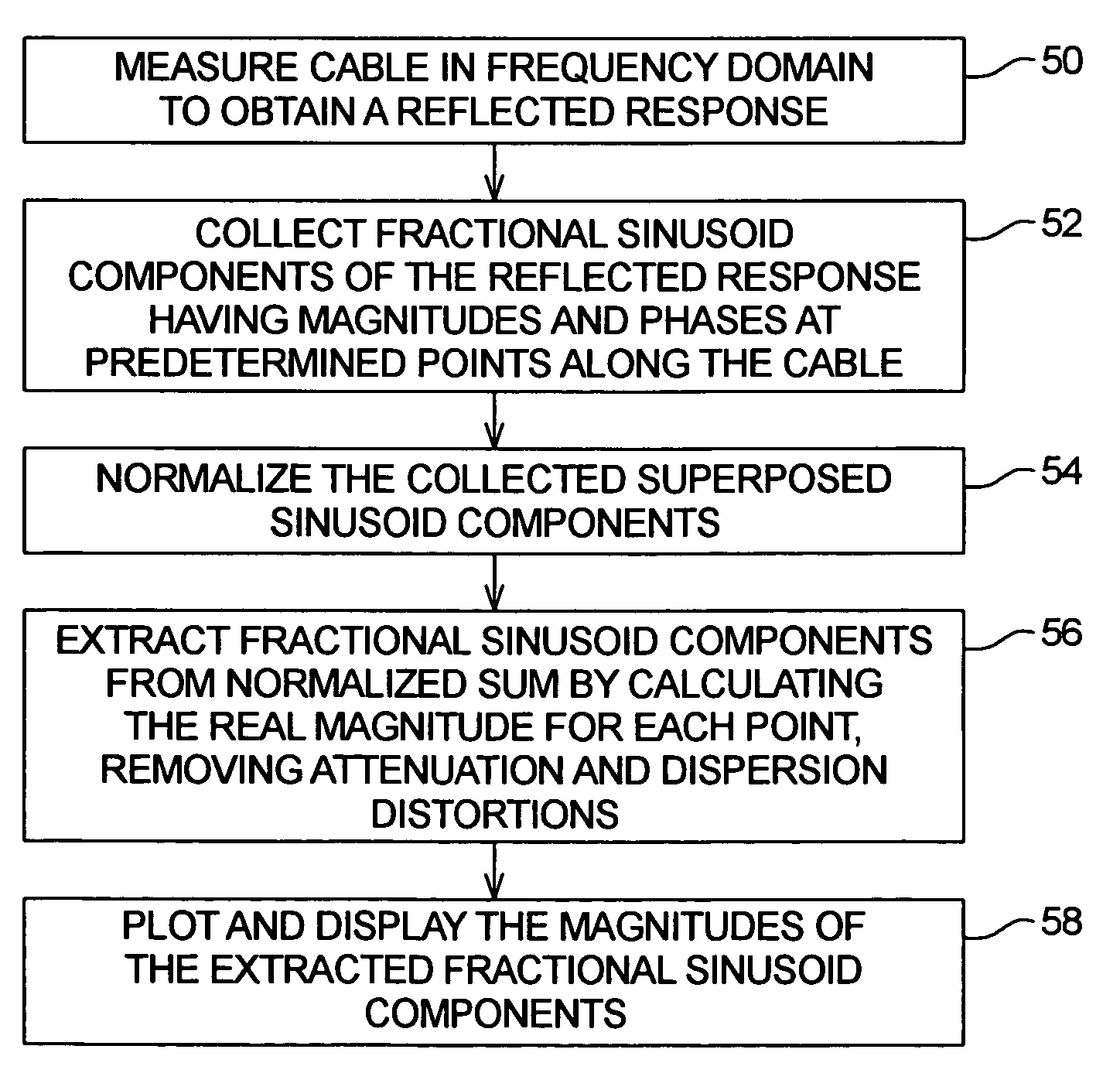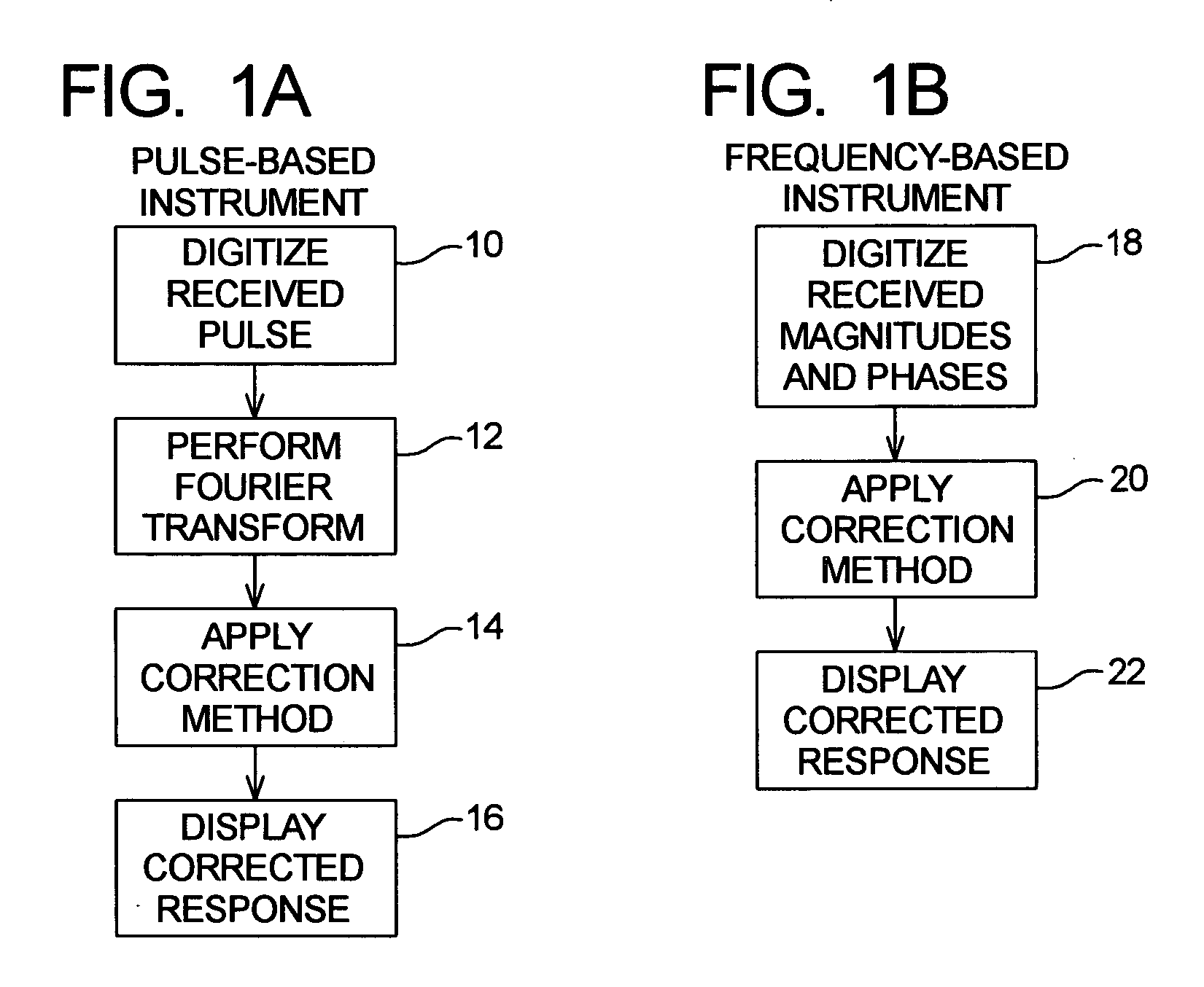Correction of loss and dispersion in cable fault measurements
a loss and dispersion correction and fault measurement technology, applied in the direction of resistance/reactance/impedence, line-transmission details, instruments, etc., can solve the problems of dispersion distortion, inaccuracy of methods, attenuation distortion, etc., and achieve the effect of removing all loss and dispersion distortion components
- Summary
- Abstract
- Description
- Claims
- Application Information
AI Technical Summary
Benefits of technology
Problems solved by technology
Method used
Image
Examples
Embodiment Construction
[0017]FIGS. 1A and 1B show a flow chart comparison of pulse-based cable test instruments and frequency-based instruments for carrying out the correction method of the present invention. Considering first FIG. 1A, a pulse-based test instrument sends a short-duration pulse into a cable under test and receives a reflected response in the time domain. In block 10, the reflected response received from the cable is “digitized,” that is, the response is sampled at a predetermined clock rate and converted to digital representations that can then be processed. In block 12, a Fourier transform transforms the digitized response from the time domain to the frequency domain. In block 14, the correction method of the present invention is applied. In block 16, the corrected response is displayed.
[0018] In FIG. 1B, a frequency-based test instrument synthesizes a virtual stimulus pulse by sending a series of sinusoidal frequencies, or “tones,” into a cable under test. Reflected responses are receiv...
PUM
 Login to View More
Login to View More Abstract
Description
Claims
Application Information
 Login to View More
Login to View More - R&D
- Intellectual Property
- Life Sciences
- Materials
- Tech Scout
- Unparalleled Data Quality
- Higher Quality Content
- 60% Fewer Hallucinations
Browse by: Latest US Patents, China's latest patents, Technical Efficacy Thesaurus, Application Domain, Technology Topic, Popular Technical Reports.
© 2025 PatSnap. All rights reserved.Legal|Privacy policy|Modern Slavery Act Transparency Statement|Sitemap|About US| Contact US: help@patsnap.com



